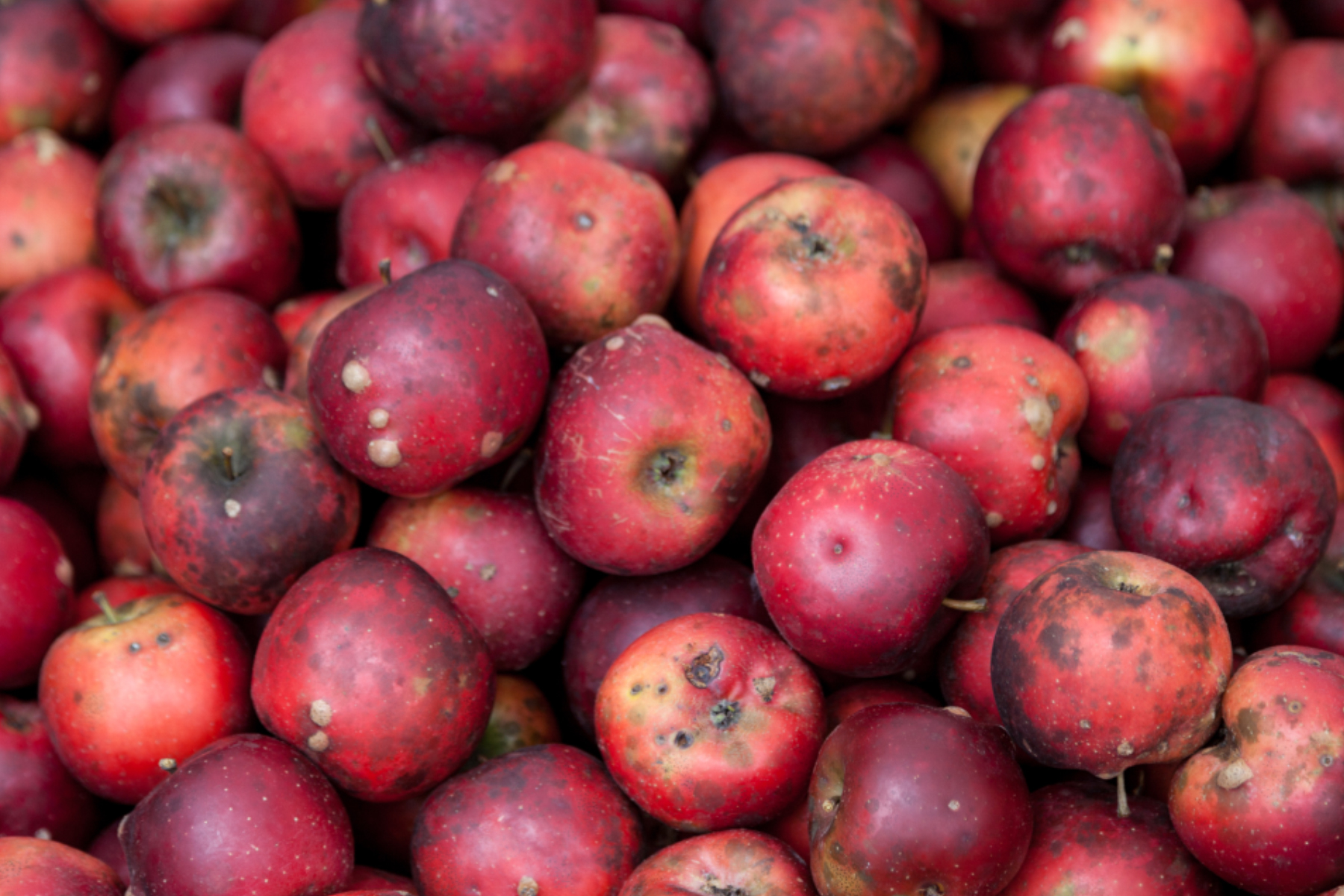
Eva Fowler, Associate Director of Programs & Communications at ReFED, is working hard at making #NoFoodWaste a reality on a national level. ReFED has set the Roadmap for decreasing food waste, and it’s time for all of us to jump on board.
What is ReFED, and how did it come to be?
ReFED is a non-profit collaboration of over 30 different businesses, non-profits, foundations, investors, innovators and government leaders committed to reducing U.S. food waste at scale. It was started by Betsy and Jesse Fink about two years ago, who began to notice how much beautiful, nutritious food was going to waste on their farm. They quickly realized that there was a large gap between the awareness of food waste and action on the issue, so they rallied a dozen other like-minded foundations and decided to invest in developing a strategic roadmap for action.
Tell us about the Roadmap.
ReFED set out to identify the most cost-effective and high impact interventions to reduce waste, understand which stakeholders needed to be around the table, and quantify the financing needed to make it happen. In March of 2016, ReFED launched the first-ever national economic baseline study of U.S. food waste with a clear path for multistakeholder action to reduce waste by 20% over the next decade.
Do you think that food waste is the largest issue currently surrounding our food system?
Yes! We waste 40% of all food we grow here in the U.S. (and globally). It costs us $218 billion—1.3% of our GDP—to grow, process, transport and dispose of this food that is never eaten. Food waste is an absurd and unnecessary reality of our food system highlighting major inefficiency.
While food waste is a costly, highly complex and integrated problem, it has the ability to solve three major issues we face at both at the national and global scale. Food waste reduction helps alleviate hunger by getting food to those in need, it offers economic opportunity by creating new jobs and stimulating new innovative businesses, and helps protect our environment by reducing green house gas emissions and reducing water, land and fertilizer use.
Food issues have barely made it into the race for President. If the future President were to consider food waste solutions, how should they be addressed?
In September, the EPA and USDA announced the first-ever goal to reduce U.S. food waste by 50% over the next 15 years—in line with the UN Sustainable Development Goals with the same target. The new administration should continue to support these two agencies efforts and the businesses, non-profits and others who have also signed onto this important goal. Food waste is unique because it is a bipartisan issue that everyone can get behind. Everyone wants to alleviate hunger, create jobs, and protect our environment, so I am optimistic that the spotlight on this issue will only increase in importance.
What’s one of your first (and most memorable) interactions with food?
My first and most memorable interaction with food was with my great-aunt Josie. She was a holocaust survivor from Austria so she had the ultimate “food is love” mentality given the hardship and uncertainty she experienced for many decades of her life. She also had purple hair and didn’t know it (I think she meant to dye it black). My mom would actually stomp her feet like an angry bull if we kids ever giggled at the sight of it, especially when it glimmered in the sunshine like a cloud of cotton candy. Anyway, she would make her “Josie cookies”—star shaped butter cookies with chocolate chips and jam, pack them gently in wax paper and Tupperware and present them proudly to us when she came to visit. I learned recently that these cookies are actually linzer tarts, but in my mind, these are uniquely “Josie cookies”.
The Roadmap outlines an $18 billion investment that will result in over $100 billion in value over a decade. What do you think it will take for people to bite the bullet and institute change?
The Roadmap outlines a suite of 27 cost-effective, scalable solutions to divert nearly 13 million tons of food from landfills and farms. To implement them would take an $18 billion investment, just 1/10th of a penny for every pound diverted, that would result in $100 billion in benefits to business, consumers and tax payers, over the next decade. Beyond this $100 billion, implementing the Roadmap is estimated to generate 15,000 new jobs; annually it would increase consumer spending power by $6 billion, business profits by up to $2 billion, double recovered food donations to nonprofits (1.8 billion meals), reduce up to 1.5% of freshwater use (1.6 trillion gallons), and avoid nearly 18 million tons of greenhouse gas emissions.
We have identified four cross-cutting actions needed to truly institute change:
1) financing from corporate, government and philanthropic sources
2) commonsense policy that makes food donation easier, standardizes food safety regulations and stimulates investment recycling infrastructure
3) business model and technology innovation
4) consumer education to activate a shift in consumer behavior around waste reduction
Date labeling standardization is one of the most cost-effective prevention solutions in the Roadmap. Please tell us a little about date labelling, what currently exists, and what needs to change.
In the absence of federal regulation, it has been up to the states to develop food label laws, and this has resulted in the variety of labeling jargon that leads us to question whether our milk is still good, or if the chicken has taken a turn for the worse. But in general, these dates do not indicate food safety, and instead show the manufacturer’s expectation for how long the food will taste its best. To make things worse, 20 different states prohibit the donation of food past its date label, despite the lack of scientific evidence that this food has become unsafe for consumption. For all of these reasons, food waste advocates are pushing for the national standardization of date labels, calling for labels that explicitly identify whether a date label indicates food quality or if it indicates food safety.
What other food waste prevention tactics should be implemented?
In the Roadmap, prevention solutions were identified as some of the most cost-effective, and surprisingly had the largest net environmental impact—even more than recycling solutions. This is mainly because of the agricultural resources that never went to waste. Many of these tactics include business solutions like trayless dining in cafeterias, spoilage prevention packaging, waste tracking, and imperfect and ugly produce. Another major prevention solution that can be implemented nationally is consumer education campaigns. The AdCouncil, along with the Natural Resources Defense Council just launched a three-year national awareness campaign focused on reducing consumer food waste. Check out their amazing, cry-worthy video and get involved through savethefood.com.
WANT TO BE FEATURED ON BEHIND THE PLATE?
DOWNLOAD THE FOODSTAND APP!
Donation is a key food waste recovery tactic. Why is it so hard to donate food?
There are four major barriers to donating food—liability concerns; fragmented regulation; handling, transportation and storage; and financial viability. But while food donation can be challenging, there is some good news. In December 2015 the Protecting Americans from Tax Hikes (PATH) Act was introduced, making permanent the charitable giving tax incentives for food donation. These benefits that had previously only been accessible to large C corporations, have been expanded to smaller food businesses and farms. Additionally, these deductions were enhanced, meaning businesses can now claim both a portion of the cost of the food and the potential profits. There is now a major opportunity for the federal government to educate businesses and farms so they can benefit from these new tax incentives.
While the majority of food waste occurs before food arrives into our homes, food waste at home is the largest piece of the pie—making up 43% of waste. Beyond using all parts of foods and composting at home, what other food waste recycling methods do you see in our future?
The food waste recycling methods available to you will depend on what organics recycling infrastructure exists in your region. For larger metropolitan areas, we expect to see an increase in centralized composting and anaerobic digestion facilities—especially in the Northeast, Northwest and Midwest regions of the United States, where high landfill disposal fees and high compost and energy market prices will make these facilities more financially attractive. For those who aren’t familiar, anaerobic digestion is allowing microorganisms to break down organic waste without the presence of oxygen, which results in the generation of biogas and digested solids (digestate).
Throughout both urban and suburban centers, a really exciting trend is the increase in decentralized, community-based composting sites. These smaller facilities can be found in community gardens or neighborhood centers, on degraded sites, or even under the Queensboro Bridge right here in New York City! Community composters play a major role by educating and engaging the public around composting, and by providing recycling infrastructure in areas where centralized options either don’t exist, or aren’t available to the public. On Sundays, I take my compost down to my local farmers market. For you New Yorkers, find ways to recycle your food scraps through Grow NYC.
Foodstand is in the midst of our second #NoFoodWaste campaign. What are some #NoFoodWaste practices that you incorporate into your daily life?
I compost in our home using the Bokashi system which basically “pickles” your food scraps—a major plus because it curbs the smell in your kitchen. I also make compound butters and pestos out of the wilting, miscellaneous herbs in my crisper. I sneak spinach into just about every hot dish I make (spinach and greens are normally the first things to die in my fridge). And finally, when I’m out, I always order the “kiddie” sized version of my favorite smoothie and protein shake. My pet peeve is ginormous cups and portion offerings that I know I’ll never eat or drink. Protects the wallet, the waistline and the environment!
How do you define good food?
Good food is food that is made with love, intention and only a few ingredients!
If you could get the general population to change one aspect of their eating habits, what would it be?
One habit I would change is that we should all pipe up at our grocery stores, restaurants, and delis, and refuse the senseless, extra packaging our food is always placed in. I used to get an egg sandwich from my corner deli—they would wrap it in wax paper, then foil, then put it in a plastic container, put the container in a paper bag, then put that in a plastic bag and then hand it to me with a fork and knife. This is so common and so unnecessary. Unless you are stepping out into a torrential rainstorm, tell them to wrap it once, and then toss it in your backpack.
If you weren’t doing what you’re doing, what would you be doing?
If I wasn’t working on the nation’s leading food waste initiative, I would be a chef!
What’s always in your fridge? What do you use it for?
I always have eggs, lemons, scallions, and fish in the fridge. Eggs because they are a cheap, easy protein for any meal; lemons because I always need to make a fresh vinaigrette; scallions because they last longer than other aromatic herbs; and fish because I belong to a local community supported fishery called Mermaid’s Garden.
Who is one famous person, dead or alive, that you want to share a meal with? And where?
I have many on my list, but I’d do anything to have a dinner party with Ina Garten in her gorgeous Hamptons home. We’d giggle and gossip while we chopped, we’d shoosh good ol’ Jeffrey away from the pots and platters, and then we’d sit down to our gorgeous meal and say in unison “How easy was THAT?!” and then burst into laughter. And then I would faint from too much happiness.
Your good food wish?
My good food wish is that we as Americans start to take better care of our precious food system by staying curious, experimental and bold in our decisions about food.






